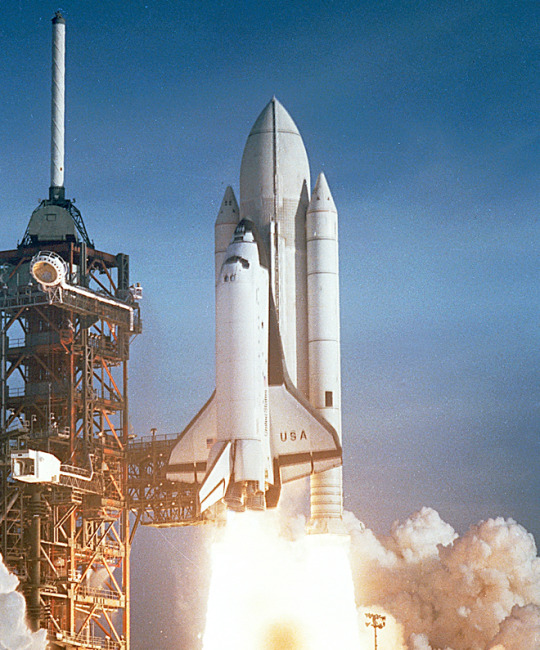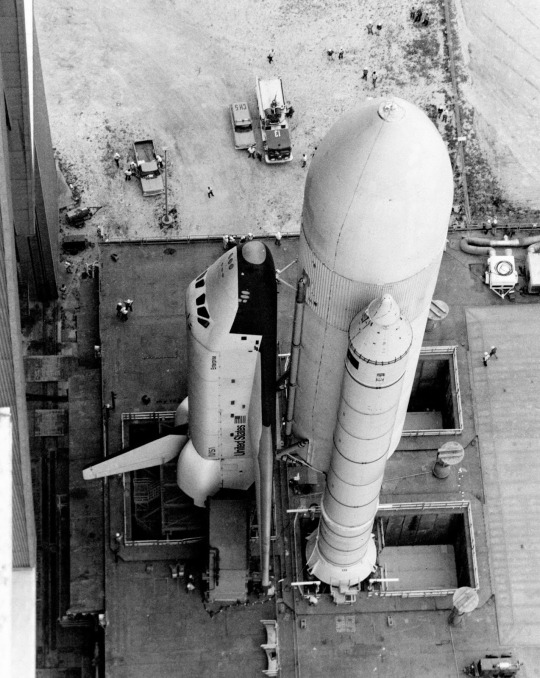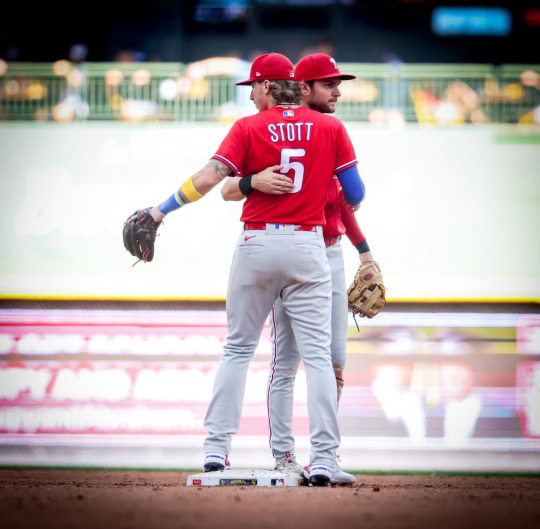#12-5-19
Note
headcanons abt how each cabin behaves at dinner time in the dining pavilion (bc I think each one has its own table) would be an amazing concept! love ur blog
dinner time
an average dinner at camp half-blood



⚡️⋆.ೃ࿔* zeus cabin
are usually the last cabin to get to the dining pavilion so they can make a dramatic entrance
would eventually get mad at cabin 5 for making fun of them for being too extravagant and start an argument with half of the cabins who tried to calm them down.
🦚⋆.ೃ࿔* hera cabin
cabin 2’s table was originally placed next to cabin 1’s one but mr. d moved it to the opposite side of the pavilion to avoid conflicts between these two cabins during dinner.
they’d spend most of the time chatting with cabin 10 and the rest of their dinner would be basically them complaining about the food.
🌊⋆.ೃ࿔* poseidon cabin
they don’t catch so much attention when arriving at the dining pavilion. most of the time they’re too tired to even talk between themselves during dinner because of their training sessions.
just give them 30 seconds to be full of energy again and teaming up with cabin 11 to throw water at mr. d.
💐⋆.ೃ࿔* demeter cabin
they are always the first ones to get there. demeter’s kids like to take flowers to decor the tables and sometimes a few of them bake/cook something to share with their friends.
they are really polite and calm, just trying to eat their dinner in peace and go back to what they were doing.
⚔️⋆.ೃ࿔* ares cabin
they’re usually really loud, especially if they had just won capture the flag, and would make sure to bump into cabin 6’s table and tease them for losing.
i think they’d have childish eating habits, like not liking vegetables and salad. they are the most likely to start a food war at some point too.
🦉⋆.ೃ࿔* athena cabin
the quiet ones who just wants to eat and go back to what they were doing before. is really common for them to take books and notebooks to the dinning pavilion because they “can’t lose time”
chiron don’t let them study in the dinning pavilion anymore because they’d stop eating when their food gets cold because of them getting distracted by their books
🌞⋆.ೃ࿔* apollo cabin
they usually arrive together with another cabin, mostly cabin 11 and 18, laughing and singing.
don’t really care about the rule of not seating in another’s cabin table, and they’d go around all the tables so they can eat with all their friends.
🌙⋆.ೃ࿔* hunters of artemis
when the hunters are in camp half-blood, they are the first ones to arrive and the first ones to leave, rare exceptions.
don’t usually interact with other cabins, and just talk between themselves.
🛠️⋆.ೃ࿔* hephaestus cabin
cabin 9 only go to the dining pavilion to get food to spend the night working and occasionally talk to some of their friends too.
they eat a lot though, and sometimes don’t manage to sneak out of the pavilion without getting caught when they are trying to take some food to their cabin
💘⋆.ೃ࿔* aphrodite cabin
some of them are usually late because they spend too much time getting ready for dinner, but others like talking to cabin 4 while they decor the tables.
they pretend to eat only healthy food but are addicted to desserts and won’t leave without eating something sweet.
📨⋆.ೃ࿔* hermes cabin
the other demigods always try to get to the dining pavilion before cabin 11 because they know that hermes’s children like playing pranks on who is late to dinner.
they also eat a lot because they need a lot of energy to keep up with their training schedule
🍷⋆.ೃ࿔* dionysus cabin
mr d. go to their cabin to check if they getting ready to dinner and then waits until all of his kids arrive to the dining pavilion to start eating.
always try to order wine from that magic cups but they never manage to do it. they get scolded by chiron really often because of that but at some point mr d. transformed him into a frog so he’d stop bothering his kids
☠️⋆.ೃ࿔* hades cabin
i feel like they don’t often have dinner with the others, but sometimes will eat in the dinning pavilion just so everyone knows they’re still there.
when they are not feeling like going to the dinning pavilion, their friends would bring some food for them in cabin 13 and they’d probably have a sleepover after that.
🌈⋆.ೃ࿔* iris cabin
they’re pretty quiet, just go there to say hello to everybody, eat and get some snacks to spend the night or to share with some friends later.
they like playing with the colors of the foods, like changing the food’s color or making it shine.
💤⋆.ೃ࿔* hypnos cabin
they might be a bit lazy but are never going to deny food. when arriving at the dinning pavilion they’d go straight to their friends table to talk a little before the food is served.
they’d never eat their whole meal because they would get tired of chewing at some point.
⚖️⋆.ೃ࿔* nemesis cabin
they have an habit of being the last ones to start eating because they think it’s unfair to have a meal while others are hungry.
would get so mad at people wasting food, or starting silly arguments (cabin 1 x cabin 5)
🏆⋆.ೃ࿔* nike cabin
they’d be either too tired while eating because of the training or would create dumb competitions
they have weird eating habits. i don’t really know how to explain but they eat weird food.
🧸⋆.ೃ࿔* hebe cabin
they are often scolded by cabin 16 for playing with their food or for speaking too loudly.
they’re just want the dessert, nothing else. (chiron won’t let them eat only sweet though)
🍀⋆.ೃ࿔* tyche cabin
never had to face situations like ordering something they don’t like or their food getting cold, because of their luck.
cabin 11 still tries to throw a pie on their faces but it just never works.
🔮⋆.ೃ࿔* hecate cabin
they put potions on the other cabins food sometimes, just to see the effect it’d have in people.
they take some food to the satyrs who live in the woods in exchange for magic ingredients for their studies.
⤷ author’s note:
that’s probably the longest hc i’ve ever written, but i hope you guys enjoy it🫶
(ps: before someone says anything about cabin 2 being here, i just want to say that i decided to include them here because i already made other hc about hera’s children so i thought it was fair to have them here)
#percy jackon and the olympians#percy jackson#heros of olympus#pjo hoo toa#pjo imagine#pjo tv show#rick riordan#riordanverse#jason grace#headcanon#cabin 1#cabin 2#cabin 3#cabin 4#cabin 5#cabin 6#cabin 7#cabin 8#cabin 9#cabin 10#cabin 11#cabin 12#cabin 13#cabin 14#cabin 15#cabin 16#cabi 17#cabin 18#cabin 19#cabin 20
128 notes
·
View notes
Text

A Date to Remember <3
#nyanaknifeart#art#illustrations#welcome home#welcome home puppet show#welcome home arg#welcome home fanart#23 8 1 20 4 15 5 19 5 22 5 18 25 20 8 9 14 7 13 5 1 14 20 8 9 19 12 15 15 11#19 15 6 6 9 6 25 15 21 18 5 19 5 5 9 14 7 20 8 9 19 7 15 15 4 12 21 3 11 6 9 14 4 9 14 7 1 12 12 15 6 9 20
375 notes
·
View notes
Text
The scariest thing about being the same person for 5 years straight is that some people are 5 years older than when I met them. This is extra scary because if I assume no one was using tumblr despite being below 13, that means they're all legal adults now every single one all of them that's bonkers. You used to be 13. How could this happen.
#brought to you by remembering how when people say “kids age 12-15” or whatever I think of the girl I met when she was 14#but she's turning 19 this year she's literally not representative of the generation currently at that age#“15 year olds are super computer illiterate” “that can't be right my friend was using Linux for years at 15” then I realize#man being mid twenties is wild my perception of time just gets worse since when is 5 years so short that's still a decent chunk of my life??#even worse is ppl born in 2000 are even older than her??? no way they should be like 14 at most and ideally 8 or below I think.#what do you mean they're turning 24.#also I need to ask myself what year it is to remember my own exact age uhh I was 22 recently I think hmm nope that's several years off.#sfw#personal#ok to reblog
26 notes
·
View notes
Text
Cancelled Missions: NASA's October 1977 Space Shuttle Flight Itinerary
"Soon after President Richard Nixon gave his blessing to the Space Shuttle Program on January 5, 1972, NASA scheduled its first orbital flight for 1977, then for March 1978. By early 1975, the date had slipped to March 1979. Funding shortfalls were to blame, as were the daunting engineering challenges of developing the world's first reusable orbital spaceship based on 1970s technology. The schedule slip was actually worse than NASA let on: as early as January 32, 1975, an internal NASA document (marked 'sensitive') gave a '90% probability date' for the first Shuttle launch of December 1979.
In October 1977, Chester Lee, director of Space Transportation System (STS) Operations at NASA Headquarters, distributed the first edition of the STS Flight Assignment Baseline, a launch schedule and payload manifest for the first 16 operational Shuttle missions. The document was in keeping with NASA's stated philosophy that reusable Shuttle Orbiters would fly on-time and often, like a fleet of cargo airplanes. The STS Utilization and Operations Office at NASA's Johnson Space Center (JSC) in Houston had prepared the document, which was meant to be revised quarterly as new customers chose the Space Shuttle as their cheap and reliable ride to space.
The JSC planners assumed that six Orbital Flight Test (OFT) missions would precede the first operational Shuttle flight. The OFT flights would see two-man crews (Commander and Pilot) put Orbiter Vehicle 102 (OV-102) through its paces in low-Earth orbit. The planners did not include the OFT schedule in their document, but the May 30, 1980 launch date for their first operational Shuttle mission suggests that they based their flight schedule on the March 1979 first OFT launch date.
Thirteen of the 16 operational flights would use OV-102 and three would use OV-101. NASA would christen OV-102 Columbia in February 1979, shortly before it rolled out of the Rockwell International plant in Palmdale, California.
As for OV-101, its name was changed from Constitution to Enterprise in mid-1976 at the insistence of Star Trek fans. Enterprise flew in Approach and Landing Test (ALT) flights at Edwards Air Force Base in California beginning on February 15, 1977. ALT flights, which saw the Orbiter carried by and dropped from a modified 747, ended soon after the NASA JSC planners released their document.
The first operational Space Shuttle mission, Flight 7 (May 30 - June 3, 1980), would see Columbia climb to a 225-nautical-mile (n-mi) orbit inclined 28.5° relative to Earth's equator (unless otherwise stated, all orbits are inclined at 28.5°, the latitude of Kennedy Space Center in Florida). The delta-winged Orbiter would carry a three-person crew in its two-deck crew compartment and the bus-sized Long Duration Exposure Facility (LDEF) in its 15-foot-wide, 60-foot-long payload bay.
Columbia would also carry a 'payload of opportunity' - that is, an unspecified payload. The presence of a payload of opportunity meant that the flight had available excess payload weight capacity. Payload mass up would total 27,925 pounds. Payload mass down after the Remote Manipulator System (RMS) arm hoisted LDEF out of Columbia's payload bay and released it into orbit would total 9080 pounds.

A page from the STS Flight Assignment Baseline document of October 1977 shows payloads and other features of the first five operational Space Shuttle missions plus Flight 12/Flight 12 Alternate
During Flight 8 (July 1-3, 1980), Columbia would orbit 160 n mi above the Earth. Three astronauts would release two satellites and their solid-propellant rocket stages: Tracking and Data Relay Satellite-A (TDRS-A) with a two-stage Interim Upper Stage (IUS) and the Satellite Business Systems-A (SBS-A) commercial communications satellite on a Spinning Solid Upper Stage-Delta-class (SSUS-D).
Prior to release, the crew would spin the SBS-A satellite about its long axis on a turntable to create gyroscopic stability and raise TDRS-A on a tilt-table. After release, their respective solid-propellant stages would propel them to their assigned slots in geostationary orbit (GEO), 19,323 n mi above the equator. Payload mass up would total 51,243 pounds; mass down, 8912 pounds, most of which would comprise reusable restraint and deployment hardware for the satellites.
The TDRS system, which would include three operational satellites and an orbiting spare, was meant to trim costs and improve communications coverage by replacing most of the ground-based Manned Space Flight Network (MSFN). Previous U.S. piloted missions had relied on MSFN ground stations to relay communications to and from the Mission Control Center (MCC) in Houston. Because spacecraft in low-Earth orbit could remain in range of a given ground station for only a few minutes at a time, astronauts were frequently out of contact with the MCC.
On Flight 9 (August 1-6, 1980), Columbia would climb to a 160-n-mi orbit. Three astronauts would deploy GOES-D, a National Oceanic and Atmospheric Administration (NOAA) weather satellite, and Anik-C/1, a Canadian communications satellite. Before release, the crew would raise the NOAA satellite and its SSUS-Atlas-class (SSUS-A) rocket stage on the tilt-table and spin up the Anik-C/1-SSUS-D combination on the turntable. In addition to the two named satellites, NASA JSC planners reckoned that Columbia could carry a 14,000-pound payload of opportunity. Payload mass up would total 36,017 pounds; mass down, 21,116 pounds.
Following Flight 9, NASA would withdraw Columbia from service for 12 weeks to permit conversion from OFT configuration to operational configuration. The JSC planners explained that the conversion would be deferred until after Flight 9 to ensure an on-time first operational flight and to save time by combining it with Columbia's preparations for the first Spacelab mission on Flight 11. The switch from OFT to operational configuration would entail removal of Development Flight Instrumentation (sensors for monitoring Orbiter systems and performance); replacement of Commander and Pilot ejection seats on the crew compartment upper deck (the flight deck) with fixed seats; power system upgrades; and installation of an airlock on the crew compartment lower deck (the mid-deck).
Flight 10 (November 14-16, 1980) would be a near-copy of Flight 8. A three-person Columbia crew would deploy TDRS-B/IUS and SBS-B/SSUS-D into a 160-n-mi-high orbit. The rocket stages would then boost the satellites to GEO. Cargo mass up would total 53,744 pounds; mass down, 11,443 pounds.
Flight 11 (December 18-25, 1980) would see the orbital debut of Spacelab. Columbia would orbit Earth 160 n mi high at 57° of inclination. NASA and the multinational European Space Research Organization (ESRO) agreed in August 1973 that Europe should develop and manufacture Spacelab pressurized modules and unpressurized pallets for use in the Space Shuttle Program. Initially dubbed the 'sortie lab,' Spacelab would operate only in the Orbiter payload bay; it was not intended as an independent space station, though many hoped that it would help to demonstrate that an Earth-orbiting station could be useful.
ESRO merged with the European Launcher Development Organization in 1975 to form the European Space Agency (ESA). Columbia's five-person crew for Flight 11 would probably include scientists and at least one astronaut from an ESA member country.
Flight 12 (January 30 - February 1, 1981), a near-copy of Flights 8 and 10, would see Columbia's three-person crew deploy TDRS-C/IUS and Anik-C/2/SSUS-D into 160-n-mi-high orbit. Payload mass up would total 53,744 pounds; mass down, 11,443 pounds.
JSC planners inserted an optional 'Flight 12 Alternate' (January 30 - February 4, 1981) into their schedule which, if flown, would replace Flight 12. Columbia would orbit 160 n mi above the Earth. Its three-person crew would deploy Anik-C/2 on a SSUS-D stage. The mission's main purpose, however, would be to create a backup launch opportunity for an Intelsat V-class satellite already scheduled for launch on a U.S. Atlas-Centaur or European Ariane I rocket. An SSUS-A stage would boost the Intelsat V from Shuttle orbit to GEO.
NASA JSC assumed that, besides the satellites, stages, and their support hardware, Columbia would for Flight 12 Alternate tote an attached payload of opportunity that would need to operate in space for five days to provide useful data (hence the mission's planned duration). Payload mass up would total 37,067 pounds; mass down, 17,347 pounds.

Space Shuttle Flights 13 through 18 would include the first orbital mission of the OV-101 Enterprise (Flight 17), during which astronauts would retrieve the LDEF payload deployed during Flight 7.
Flight 13 (March 3-8, 1981) would see three astronauts on board Columbia release NOAA's GOES-E satellite attached to an SSUS-D stage into a 160-n-mi-high orbit. OV-102 would have room for two payloads of opportunity: one attached at the front of the payload bay and one deployed from a turntable aft of the GOES-E/SSUS-D combination. Payload mass up would total 38,549 pounds; mass down, 23,647 pounds.
Flight 14 would last 12 days, making it the longest described in the STS Flight Assignment Baseline document. Scheduled for launch on April 7, 1981, it would carry a 'train' of four unpressurized Spacelab experiment pallets and an 'Igloo,' a small pressurized compartment for pallet support equipment. The Igloo, though pressurized, would not be accessible to the five-person crew. OV-102 would orbit 225 n mi high at an inclination of 57°. Mass up would total 31,833 pounds; mass down, 28,450 pounds.
Flight 15 (May 13-15, 1981) would be a near-copy of Flights 8, 10, and 12. OV-102 would transport to orbit a payload totaling 53,744 pounds; payload mass down would total 11,443 pounds. The JSC planners noted the possibility that none of the potential payloads for Flight 15 — TDRS-D and SBS-C or Anik-C/3 — would need to be launched as early as May 1981. TDRS-D was meant as an orbiting spare; if the first three TDRS operated as planned, its launch could be postponed. Likewise, SBS-C and Anik-C/3 were each a backup for the previously launched satellites in their series.
Flight 16 (June 16-23, 1981) would be a five-person Spacelab pressurized module flight aboard OV-102 in 160-n-mi-high orbit. Payloads of opportunity totaling about 18,000 pounds might accompany the Spacelab module; for planning purposes, a satellite and SSUS-D on a turntable behind the module was assumed. Payload mass up would total 35,676 pounds; mass down, 27,995 pounds.
Flight 17, scheduled for July 16-20, 1981, would see the space debut of Enterprise and the retrieval of the LDEF released during Flight 7. OV-101 would climb to a roughly 200-n-mi-high orbit (LDEF's altitude after 13.5 months of orbital decay would determine the mission's precise altitude).
Before rendezvous with LDEF, Flight 17's three-man crew would release an Intelsat V/SSUS-A and a satellite payload of opportunity. After the satellites were sent on their way, the astronauts would pilot Enterprise to a rendezvous with LDEF, snare it with the RMS, and secure it in the payload bay. Mass up would total 26,564 pounds; mass down, 26,369 pounds.
For Flight 18 (July 29-August 5, 1981), Columbia would carry to a 160-n-mi-high orbit a Spacelab pallet dedicated to materials processing in the vacuum and microgravity of space. The three-person flight might also include the first acknowledged Department of Defense (DOD) payload of the Space Shuttle Program, a U.S. Air Force pallet designated STP-P80-1. JSC called the payload 'Planned' rather than 'Firm' and noted somewhat cryptically that it was the Teal Ruby experiment 'accommodated from OFT [Orbital Flight Test].'
The presence of the Earth-directed Teal Ruby sensor payload would account for Flight 18's planned 57° orbital inclination, which would take it over most of Earth's densely populated areas. Payload mass up might total 32,548 pounds; mass down, 23,827 pounds.

Space Shuttle Flights 20 through 23 would include the first mission to make use of an OMS kit to increase its orbital altitude (Flight 21), the first European Space Agency-sponsored Spacelab mission (Flight 22), and the launch of the Jupiter Orbiter and Probe spacecraft (Flight 23)
Flight 19 (September 2-9, 1981) would see five Spacelab experiment pallets fill Columbia's payload bay. Five astronauts would operate the experiments, which would emphasize physics and astronomy. The Orbiter would circle Earth in a 216-n-mi-high orbit. Payload mass up would total 29,214 pounds; mass down, 27,522 pounds.
Flight 20 (September 30-October 6, 1981), the second Enterprise mission, would see five astronauts conduct life science and astronomy experiments in a 216-n-mi-high orbit using a Spacelab pressurized module and an unpressurized pallet. JSC planners acknowledged that the mission's down payload mass (34,248 pounds) might be 'excessive,' but noted that their estimate was 'based on preliminary payload data.' Mass up would total 37,065 pounds.
On Flight 21, scheduled for launch on October 14, 1981, Columbia would carry the first Orbital Maneuvering System (OMS) Kit at the aft end of its payload bay. The OMS Kit would carry enough supplemental propellants for the Orbiter's twin rear-mounted OMS engines to perform a velocity change of 500 feet per second. This would enable OV-102 to rendezvous with and retrieve the Solar Maximum Mission (SMM) satellite in a 300-n-mi-high orbit.
Three astronauts would fly the five-day mission, which would attain the highest orbital altitude of any flight in the STS Flight Assignment Baseline document. JSC planners noted that the Multi-mission Modular Spacecraft (MMS) support hardware meant to carry SMM back to Earth could also transport an MMS-type satellite into orbit. Payload mass up would total 37,145 pounds; mass down, 23,433 pounds.
On Flight 22 (November 25 - December 2, 1981), Enterprise might carry an ESA-sponsored Spacelab mission with a five-person crew, a pressurized lab module, and a pallet to a 155-to-177-n-mi orbit inclined at 57°. Payload mass up might total 34,031 pounds; mass down, 32,339 pounds.
During Flight 23 (January 5-6, 1982), the last described in the STS Flight Assignment Baseline document, three astronauts would deploy into a 150-to-160-n-mi-high orbit the Jupiter Orbiter and Probe (JOP) spacecraft on a stack of three IUSs. President Jimmy Carter had requested new-start funds for JOP in his Fiscal Year 1978 NASA budget, which had taken effect on October 1, 1977. Because JOP was so new when they prepared their document, JSC planners declined to estimate up/down payload masses.
Flight 23 formed an anchor point for the Shuttle schedule because JOP had a launch window dictated by the movements of the planets. If the automated explorer did not leave for Jupiter between January 2 and 12, 1982, it would mean a 13-month delay while Earth and Jupiter moved into position for another launch attempt.
Almost nothing in the October 1977 STS Flight Assignment Baseline document occurred as planned. It was not even updated quarterly; no update had been issued as of mid-November 1978, by which time the target launch dates for the first Space Shuttle orbital mission and the first operational Shuttle flight had slipped officially to September 28, 1979 and February 27, 1981, respectively.

The Space Shuttle Orbiter Columbia lifts off at the start of STS-1.
The first Shuttle flight, designated STS-1, did not in fact lift off until April 12, 1981. As in the STS Flight Assignment Baseline document, OV-102 Columbia performed the OFT missions; OFT concluded, however, after only four flights. After the seven-day STS-4 mission (June 27 - July 4, 1982), President Ronald Reagan declared the Shuttle operational.
The first operational flight, also using Columbia, was STS-5 (November 11-16, 1982). The mission launched SBS-3 and Anik-C/3; because of Shuttle delays, the other SBS and Anik-C satellites planned for Shuttle launch had already reached space atop expendable rockets.
To the chagrin of many Star Trek fans, Enterprise never reached space. NASA decided that it would be less costly to convert Structural Test Article-099 into a flight-worthy Orbiter than to refit Enterprise for spaceflight after the ALT series. OV-099, christened Challenger, first reached space on mission STS-6 (April 4-9, 1983), which saw deployment of the first TDRS satellite.

NASA put OV-101 Enterprise to work in a variety of tests and rehearsals (such as the 'fit check' shown in the image above), but did not convert it into a spaceflight-worthy Orbiter.
The voluminous Spacelab pressurized module first reached orbit on board Columbia on mission STS-9 (November 28- December 8,1983). The 10-day Spacelab 1 mission included ESA researcher Ulf Merbold and NASA scientist-astronauts Owen Garriott and Robert Parker. Garriott, selected to be an astronaut in 1965, had flown for 59 days on board the Skylab space station in 1973. Parker had been selected in 1967, but STS-9 was his first spaceflight.
The 21,500-pound LDEF reached Earth orbit on board Challenger on STS-41C, the 11th Space Shuttle mission (April 6-13, 1984). During the same mission, astronauts captured, repaired, and released the SMM satellite, which had reached orbit on 14 February 1980 and malfunctioned in January 1981. Challenger reached SMM without an OMS kit; in fact, no OMS kit ever reached space.
STS Flight Assignment Baseline document assumed that 22 Shuttle flights (six OFT and 16 operational) would occur before January 1982. In fact, the 22nd Shuttle flight did not begin until October 1985, when Challenger carried eight astronauts and the West German Spacelab D1 into space (STS-61A, October 30 - November 6, 1985). Three months later (28 January 1986), Challenger was destroyed at the start of STS-51L, the Shuttle Program's 25th mission.
In addition to seven astronauts — NASA's first in-flight fatalities — Challenger took with it TDRS-B, NASA's second TDRS satellite. The Shuttle would not fly again until September 1988 (STS-26, September 29 - October 3, 1988). On that mission, OV-103 Discovery deployed TDRS-C. The TDRS system would not include the three satellites necessary for global coverage until TDRS-D reached orbit on board Discovery on mission STS-29 (13-18 March 1989).
Following the Challenger accident, NASA abandoned — though not without some resistance — the pretense that it operated a fleet of cargo planes. The space agency had at one time aimed for 60 Shuttle flights per year; between 1988 and 2003, the Shuttle Program managed about six per year. The most flights the Shuttle fleet accomplished in a year was nine in 1985.
Shuttle delays meant that JOP, renamed Galileo, missed its early January 1982 launch window. It was eventually rescheduled for May 1986, but the Challenger accident intervened. Galileo finally left Earth orbit on 18 October 1989 following deployment from OV-104 Atlantis during STS-34 (October 18-23, 1989).
Between the time JOP/Galileo received its first funding and the Challenger explosion, NASA, the White House, and Congress had sparred over how the Jupiter spacecraft would depart Earth orbit. Eventually, they settled on the powerful liquid-propellant Centaur-G' rocket stage.
Citing new concern for safety following Challenger, NASA canceled Centaur G'. Galileo had to rely on the less-powerful IUS, which meant that it could not travel directly to Jupiter; it had instead to perform gravity-assist flybys of Venus and Earth to reach its exploration target. Galileo did not reach the Jupiter system until December 1995.
LDEF had been scheduled for retrieval in March 1985, less than a year after deployment, but flight delays and the Challenger accident postponed its return to Earth by nearly six years. On mission STS-32 (January 9-20, 1990), astronauts on board Columbia retrieved LDEF, the orbit of which had decayed to 178 n mi. LDEF remains the largest object ever retrieved in space and returned to Earth.
During reentry at the end of mission STS-107 (16 January-1 February 2003), Columbia broke apart over northeast Texas, killing its international crew of seven astronauts. This precipitated cancellation of the Space Shuttle Program by President George W. Bush, who announced his decision on 14 January 2004.
The end of the Space Shuttle Program was originally scheduled for 2010, immediately following the planned completion of the International Space Station. In the event, STS-135, the final Space Shuttle mission, took place four years ago (July 2011), three months after the 30th anniversary of STS-1. The Orbiter Atlantis lifted off on 8 July with a four-person crew — the smallest since STS-6. It docked with the International Space Station to deliver supplies and spares and landed in Florida 13 days later."
Article by David S. F. Portree: link
source, source
NASA ID: S77-5784, S77-5785, S77-5758
#STS-1#STS-2#STS-3#STS-4#STS-5#STS-6#STS-7#STS-8#STS-9#STS-10#STS-11#STS-12#STS-13#STS-14#STS-15#STS-16#STS-17#STS-18#STS-19#STS-20#STS-21#STS-22#STS-23#Space Shuttle Columbia#Columbia#OV-102#Space Shuttle Enterprise#Enterprise#OV-101#cancelled
29 notes
·
View notes
Note
I’m back! The one who asked about Cadence and Shining. And my god. My heart. The art and the fic your friend wrote are stunning!
i would tell you to browse my tags to see all my pony stuff but apparently tumblr doesn't let tags count for even sorting through an actual person's tumblr!!! if there's too many tags. rendering all tags after a certain number useless for absolutely everything
you just have to scroll down my blog like an animal im sorry
#1#2#3#4#5#6#7#8#9#10#11#12#13#14#15#16#17#18#19#skyscraper gods lore#turns out only up to the 20th tag can be used to sort your blog#the rest are completely useless
56 notes
·
View notes
Text









From the City of Brotherly Love. Pt. 1, Pt. 2
#philadelphia#philadelphia phillies#trea turner#brandon marsh#johan rojas#nick castellanos#garrett stubbs#jeff hoffman#zack wheeler#bryce harper#bryson stott#jt realmuto#cristian pache#alec bohm#kyle schwarber#7#16#18#8#21#68#45#3#5#10#19#28#12#mlb#baseball
9 notes
·
View notes
Text
hnggghhggg
#just realized a little too hard that im packing my entire life up into a single suitcse and hitting the road for a month. in a month.#im also turning 24 in a month#both of these things perturb me in some direction or another.#its also 1030pm but i am Vibrating unfortunately#also realized vividly today that ill be attending my college graduation less than 48hrs after landing back in canada#and that will be after 30+ hours in transit coming directly from a 12 hour time difference#so that'll be fun#not really how i imagined graduating when i started my freshman year?#actually dear lord i could not have fathomed Being Here when i was 19 and starying college#i remember hearing about the program im currently doing and thinking 'wow that's incredibly cool but im just not the kind of person#who can do that sort of thing'#i still periodically have moments where i just look around and have to be like Yes I Really Am Here#and yeah turning 24. in a month. that's far too grown up of an age for how i feel inside.#and yeah trvaelljng to 5 vountires in a month again? wild.#didnt think anything could top seeing the great pyramids for out of body wild experiences And Yet. we sure are gonna be going some places.#also being in a serious relationship huh. didnt think this was going to happen until i was 35 if ever.#skmeone needs to tell me why my brain decided to watch wedding dress youtube shorts today with a vague expectation that might be relevant#to my life within a decade.#so yeah all that to say my life feels fucking insane to me.#I Am Not Qualified For This Experience Help#(this is not entirely negative im just ??????)
7 notes
·
View notes
Text
Fellas, is it gay to love something so much that any real reminder of it overwhelms you with emotion? Makes you curl up and throw it away so you don't break down and cry from just pure joy? Because you can't let yourself be happy and in love for some fucking reason, even if it's not a person you're in love with?
#gravity falls#9 10-21-19-20 23-1-14-20 20-15 2-5 1-2-12-5 20-15 1-12-12-15-23 13-25-19-5-12-6 20-15 12-15-22-5 1-7-1-9-14#9-19 20-8-1-20 19-15 14-21-3-8 20-16 1-19-11 6-15-18?#(did that on my fingers so excuse any errors)
8 notes
·
View notes
Text






being out of school for over a week due to serious illness leads children to the worst places (their middle school obsession)
#HAD A REALLY HORRIBLE SICK DAY TODAY SO HEY WHY NOT GIVE A LIFE UPDATE 😂👍#I haven’t been This absorbed into mario since I was like. 13#ironically I got initially fixated onto Mario when I was 12 because I was ALSO trapped at home for several weeks due to a bad virus I caught#and ALSO THE GAME IVE CHOSEN TO LATCH ONTO IN BOTH SCENARIOS HAS BEEN BOWSERS INSIDE STORY?#I guess that’s just. The Game for when u wanna get back into the mayrio Groove...ok#anyhow I am the number one prince peasley understander he is my beloved and he is so Complex and Awesome#also gay pride amiright lol!#okay GOODNIGHT ENJOY THESE DOODLESSSSSSS#vics silly art zone 2022#5/19/22#5/18/22#5/17/22#5/16/22#super mario#luigi#m&l rpgs#m&l superstar saga#superstar saga#prince peasley#luisley#starlow#fanart#no stealing or reposts please!! these are unwatermarked i know but please don’t take advantage of that >:( !! thank u
170 notes
·
View notes
Text
"La caída de la soberbia"
Con frecuencia hemos visto a una niña que anda contoneándose para lucir, ante quienes lo ven, su ropa nueva; y al tropezar y caer llora lo más fuerte que puede al ver su vestido sucio por la tierra o por el lodo del piso.
De similar manera, Dios ha puesto en ti muchas gracias, muchas cualidades o virtudes y te ha concedido muchos hechos. Puede ser que al pensar en estas cosas te jactes por ellas y desdeñes a quienes no las tienen, como lo hicieron Roboam y Nabucodonosor al pensar en su respectiva grandeza, y como ellos cayeron así también tú podrías caer. Y puede ser que cuando estés caído, en lugar de hacer alarde de lo que tenías y en lugar de jactarte por ello, te pongas a llorar como aquella niña imprudente: porque tu traje hermoso se ha ensuciado y se ha manchado en la caída.
"Cawday, adaptación."
#Salmo 1#Salmo 49:6#Proverbios 2:14#Isaías 24:8#Marcos 10:23-25#Lucas 12:19#Romanos 1:30#Romanos 3:23#1 Corintios 5:6#1Timoteo 6:17-19#lumafiiks#palabra de dios#reflexiones#iead248#cristianismo#evangelio#biblia#Romanos 3:27#Romanos 11:18
5 notes
·
View notes
Text
Gethsemane
Holy Week is a good time to remember what Jesus did for us. He was definitely crushed in soul in the Garden of Gethsemane. This is a good devotional for this week, I hope it helps you reflect on our amazing Savior, Jesus Christ!
Even though I am torn within, and my soul is in turmoil, I will not ask the Father to rescue me from this hour of trial. For I have come to fulfill my purpose — to offer myself to God. So, Father, bring glory to your name!” Then suddenly a booming voice was heard from the sky, “I have glorified my name! And I will glorify it through you again! John 12:27-28
Gethsemane literally means “oil…

View On WordPress
#Beautiful Agony#Betrayal#Christian#Christianity#comfort zone#death#Desperate Prayer#Easter#Father God#God&039;s Will#grief#holy week#Human Will#Isaiah 53:5#Jesus#Jesus Christ#Jesus Died#John 12:27-28#John 13:1-3#John 14:19-21#Lord#Matthew 26:36-41#NeedToBreathe: Temporary Tears; Soul Healing#Not My Will#overcome#overwhelmed#redeemer#Rumble: Soul Wounds#savior#soul agony
2 notes
·
View notes
Text

love this creature
#play strange horticulture i am asking so politely#my post#strange horticulture#love this funny little fucked up 8-ending mystery puzzle game with The Horrors. love these plants.#love going insane at 5 in the morning trying to figure out what 12-3 is (it's down 2 right 3 i am occasionally silly)#love finangling the map controls while holding the shift buttons cause i've turned into jared 19 again#love hoarding all of my plants and staring each one down meticulously and lovingly studying/sorting them#10/10 would feed a cop to a carnivorous plant again. wish the wikis mentioned THAT was an option#'auuuuu you'll get ARRESTED in the epilogue if you-' Hello Yes Officer Would You Like To Meet More Of My Plants#in for a pence in for a pound at that point.#(if you're seeing this in the game's tag: i am so sorry for the word vomit but this is for my followers. i am insane.)
16 notes
·
View notes
Text
Download Karanyi Sounds – Analog Nightmares for Vintage

Karanyi Sounds presents Analog Nightmares, a virtual instrument that transports you to the captivating world of retro synthesis. Explore the rich tapestry of analog soundscapes, where warm basslines, lush pads, and gritty leads reign supreme. Whether you're a seasoned synth aficionado or a newcomer to the realm of electronic music, Analog Nightmares offers a treasure trove of vintage-inspired sounds to ignite your creativity and elevate your productions.
Analog Nightmares meticulously captures the essence of classic Karanyi Sounds – Analog Nightmares Download analog synthesizers, blending authentic samples with modern processing techniques to deliver a sonic palette that's both timeless and cutting-edge. From the warm, pulsating tones of yesteryear to the edgy, distorted textures of tomorrow, each sound is infused with the character and charm of vintage hardware, inviting you to explore new sonic horizons and push the boundaries of your musical imagination.
#1. Virtual instrument#2. Synthesizer#3. Karanyi Sounds#4. Analog synthesis#5. Retro#6. Vintage#7. Electronic music#8. Sound design#9. Music production#10. Creative expression#11. Synthwave#12. Ambient#13. Cinematic#14. EDM#15. Texture#16. Modulation#17. Effects#18. Sample library#19. Nostalgia#20. Artistic exploration
2 notes
·
View notes
Text
Happy 2024
In 2023 I read the following books:
Monterosso mon amour, by Ilja Leonard Pfeijfer
The Langauge of Thorns, by Leigh Bardugo
Renegades, by Marissa Meyer
Heartstopper, by Alice Oseman
The Lives of Saints, by Leigh Bardugo
Archenemies, by Marissa Meyer
Heartstopper volume 2, by Alice Oseman
Heartstopper volume 3, by Alice Oseman
Heartstopper volume 4, by Alice Oseman
An Italian Girl in Brooklynn, by Santa Montefiore
Volwassen worden is optioneel, by Marloes de Vries
De woestijndief, by Emmelie Arents
The Mitford Vanishing, by Jessica Fellowes
Wat gebeurde er met David, by Henk Hardeman
Queen of Shadows, by Sarah J Maas
Supernova, by Marissa Meyer
Wees Lucie, by Astrid Boonstoppel
Grijs, by Carlie van Tongeren
Zwaar verguld, by Chantal van Gastel
Over straatfiguren en wegpiraten, by Mijke Pelgrim
Anna K Away, by Jenny Lee
Zorro. The Curse of Capistrano, by Johnston Mcculley
De tweede stem, by Elin Meijnen
Mortal Engines, by Philip Reeve
De meesterdief, by Emmelie Arents
Nick and Charlie, by Alice Oseman
Stewardess Hannah in Parijs, by Petra Kruijt
Stewardess Hannah in Rome, by Petra Kruijt
Sintel en As, by Mara Li
Stewardess Hannah op Ibiza, by Petra Kruijt
The Golden Enclaves, by Naomi Novik
Welkom in Smartpark, by Mirjam Mous
Stewardess Hannah in Reykjavik, by Petra Kruijt
The Iron Sword, by Julie Kagawa
Gilded, by Marissa Meyer
The Syndicate, by Shelena Shorts
Stewardess Hannah in Barcelona, by Petra Kruijt
Stewardess Hannah in Amsterdam, by Petra Kruijt
The Pace, by Shelena Shorts
Stewardess Hannah in New York, by Petra Kruijt
One of us is Lying, by Karen M Mcmanus
Predator's Gold, by Philip Reeve
Stewardess Hannah in Praag, by Petra Kruijt
The Broken Lake, by Shelena Shorts
Stewardess Hannah op Curaçao, by Petra Kruijt
One of Us is Next, by Karen M Mcmanus
Stewardess Hannah in Lissabon, by Petra Kruijt
Wind, by Esther Walraven
The Iron Quill, by Shelena Shorts
The Hour of Dreams, by Shelena Shorts
Penthouse, Lotte Boot
Denken wat je wilt, doe wat je droomt, Gijs Jansen
Empire of Storms, by Sarah J Maas
One of Us is Back, by Karen M Mcmanus
Confessions of a Shopaholic, by Sophie Kinsella
To All the Boys I've Loved Before, by Jenny Han
Ivelle, by Laura Diane
PS. I Still Love You, by Jenny Han
Always and Forever, Lara Jean, by Jenny Han
Anders, beter, by Lisa van Campenhout
The Iron Vow, by Julie Kagawa
#8/2/2023#3/1/2023#10/2/2023#26/2/2023#6/3/2023#12/3/2023#14/3/2023#19/3/2023#27/3/2023#2/4/2023#5/4/2023#30/4/2023#7/5/2023#14/5/2023#21/5/2023#11/6/2023#18/6/2023#9/7/2023#15/7/2023#23/7/2023#26/7/2023#3/8/2023#13/8/2023#15/8/2023#20/8/2023#24/8/2023#27/8/2023#3/9/2023#5/9/2023#17/9/2023
3 notes
·
View notes
Text
Jinx: The Night is Young 🌕 ⌛
#Jaekyung #JooJaekyung #KimDan #Manhwa #Mingwa #징크스 #Jinxmanhwa #Jinx The essay : "The Night Is Young 🌕 ⌛" is finished. I hope you'll like it. Feel free to comment. Retweet/like it as support. Thanks. Essay is locked.
Please support the authors by reading the manhwas on the official websites. This is where you can read the manhwa: Jinx But be aware that the Manhwa is a mature Yaoi, which means, it is about homosexuality with explicit scenes. Here is the link of the table of contents about Jinx. Here is the link where you can find the table of contents of analyzed manhwas. Here are the links, if you are…

View On WordPress
#Analyses#Chapter 1#Chapter 12#Chapter 14#Chapter 15#Chapter 19#Chapter 2#Chapter 21#Chapter 23#Chapter 28#Chapter 29#Chapter 3#Chapter 33#Chapter 34#Chapter 37#Chapter 38#Chapter 4#Chapter 5#Chapter 7#징크스#Jinx#Jinxmanhwa#Joo Jaekyung#Kim Dan#Manhwa#mature Yaoi#maturity#Mingwa#Positive Psychology#Psychology
4 notes
·
View notes
Text

“When God Seems Silent, remember...”
“He has promised He will never leave you: “Be strong and courageous. Do not be afraid or terrified because of them, for the Lord your God goes with you; he will never leave you nor forsake you.” —Deuteronomy 31:6 (NIV)
He speaks to you through the Bible: “For we have the living Word of God, which is full of energy, like a two-mouthed sword. It will even penetrate to the very core of our being where soul and spirit, bone and marrow meet! It interprets and reveals the true thoughts and secret motives of our hearts.” —Hebrews 4:12 (TPT)
He has given you other believers to walk alongside you: “Brothers and sisters, we urge you to warn those who are lazy. Encourage those who are timid. Take tender care of those who are weak. Be patient with everyone.” —1 Thessalonians 5:14 (NLT)
He has been faithful in the past and will be faithful in the future: “Every good thing given and every perfect gift is from above; it comes down from the Father of lights [the Creator and Sustainer of the heavens], in whom there is no variation [no rising or setting] or shadow cast by His turning [for He is perfect and never changes].” —James 1:17 (AMP)
His character never changes: “God is not a man, so he does not lie. He is not human, so he does not change his mind. Has he ever spoken and failed to act? Has he ever promised and not carried it through?” —Numbers 23:19 (NLT)
Kristin at “The Daily Grace Co.” and “Cultivate What Matters” shared a post on Instagram: "Sometimes anxiety is overwhelming. Sometimes it feels like God is silent. As someone that has struggled with anxiety…I just keep coming back to the gift of the presence of the Lord with us. It seems each morning over the past year when I open my Bible, I am reminded of it again. The Lord is with us. He does not leave us to walk through this life alone. He will go before us. He will never abandon us.
But sometimes it doesn’t feel like He is near. Sometimes it doesn’t feel like he is speaking. And in those times…we have to remind ourselves of what is true…even if we don’t feel it. Knowing that we are not alone gives us the courage to step into the unknown.
God has used this truth in the past year to give me so much freedom from the struggle with anxiety. I am so grateful for the way He comforts us in our need. So I will let these words sink into my heart. He is with me. Maybe you need to take a deep breath tonight and remind yourself of that truth as well.”
Amen. 🙏
#deuteronomy 31:6#hebrews 4:12#1 thessalonians 5:14#james 1:17#numbers 23:19#bible#christian blog#god#belief in god#faith in god#jesus#belief in jesus#faith in jesus#bible study#bible verses#bible truths#bible scriptures#bible quotes#christian life#christian faith#christian living#christian inspirational quotes#christian inspiration#christian encouragement#christian motivation#christian quotes#the daily grace co#spread the word#keep the faith#make him known
22 notes
·
View notes